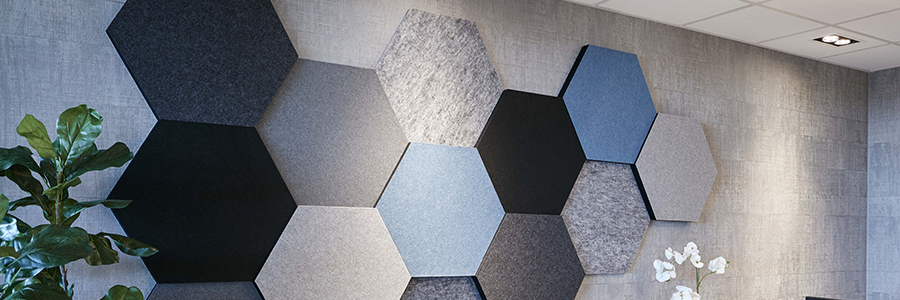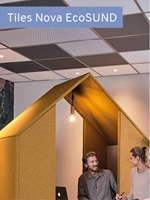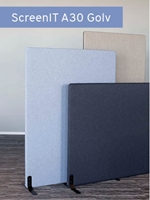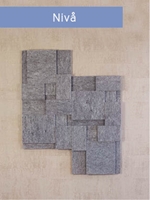



What is sound and how do acoustic solutions actually work?
The noise levels that we experience are getting higher and more constant – an unusual situation for something that has not changed significantly in 50,000 years: human hearing. Alarms, notifications, traffic, urban environments, machines, ventilation, open plan solutions, concrete, window panes, office environments and lots of people in small areas. It is not surprising that modern life affects our health and well-being, because hearing is one sense that cannot be switched off. But that is the situation and it seems difficult to do anything about it. What we can do on the other hand is to improve the sound environment.
The right sound environment gives a lot of advantages. There are measurable effects on people in premises that have good acoustics, compared to those that don't. Reduced stress levels, reduced sickness absence and higher performance are some of the most common results. Good acoustic conditions are also about social sustainability: people with hearing or concentration difficulties may be present in and work in the same locations and in the same conditions as their colleagues.

An acoustic glossary
Sound is defined as pressure propagation in an elastic medium, usually air, and can easily be explained as an event that creates a noise, where the noise is vibrations that travel through the air. These vibrations are called sound waves, which are captured by the ear and converted by the brain into information that we can use. Sound levels are measured in decibels (dB).
Noise is sound that is unwanted and that we cannot control.
Frequency is the level of the sound waves that are captured by the ear and create sound and are measured in Hertz (Hz). Sound waves occur at different frequencies, low and high, and the human ear can hear sound waves between 20 – 20,000 Hz.
Speech intelligibility, and in particular poor speech intelligibility, means that there is too much low-frequency noise in a room. Low frequencies (vowels) override high frequencies (consonants), and it is the consonants that are important for comprehending speech.
Reverberation time is the measurement of how much ”echo” there is in a room, and depends on how long sound waves can bounce against hard surfaces in a room after the source of the sound is silent.
Sound absorption occurs when sound waves meet a porous, or soft, material. The material breaks up the sound waves, which in the end stop and are silent. Using sound absorbing materials or products in a room reduces the sound reflections, or echoes, that occur if sound waves hit hard surfaces.
Sound damping means that there should be less sound on the other side of the object that the sound waves meet; attenuating the sound from the source to the listener.
Diffusion when speaking about acoustics means spreading, and occurs when sound waves meet an irregular surface – they spread in different directions or breakup in smaller parts, and are experienced as less disturbing. Diffusion is a very useful tool to make the sound image and room seem larger.
How should the interior of a premises be decoration to obtain as good a sound environment as possible?
We have several tips on how to make rooms more pleasant to be in. The basic rules are the same: bear in mind the ceiling, walls and furnishings. Then the room can be further improved by adding solutions that are more specific to the type of activity being undertaken. The right solution in the right place.

CEILINGS
The ceiling is the first and often most important and simplest surface to rectify. It is common to have fully-covering suspended ceilings. The most important thing is that the sound absorbent ceiling tiles are at least 40 mm thick. If there is no suspended ceiling, sound absorbents can be added individually to achieve a similar effect of sound absorption.

WALLS
Hard wall surfaces reflect and reinforce the sound level in the room, and also contribute to sound being heard from a distance. To reduce the reverberation time in the room it is a good idea to install wall suspended sound absorbents, and curtains at the windows. Ideal for installation beside a sound source such as a printer, copier, coffee machine or at a conference table. Wall suspended absorbents are solutions that give a room a more pleasant sound environment.

PARTITIONING AND FURNITURE
Partitions and furniture can be used in interior design to reduce and lower noise levels between different locations and zones of a room.
To reduce sound, partition walls can be used to screen workstations from noisy machines such as printers, copiers and coffee machines, and suspended partitions are good for creating different sound zones. Room within room solutions are advantageous for telephone conversations or short meetings that require reduced noise, but don't need silence. Sofas, plants, bookshelves and other furniture contribute to diffusion and the spreading the sound. Soft-closing drawers on cabinets and pads for chairs are other simple solutions that can also contribute to a better sound environment.









